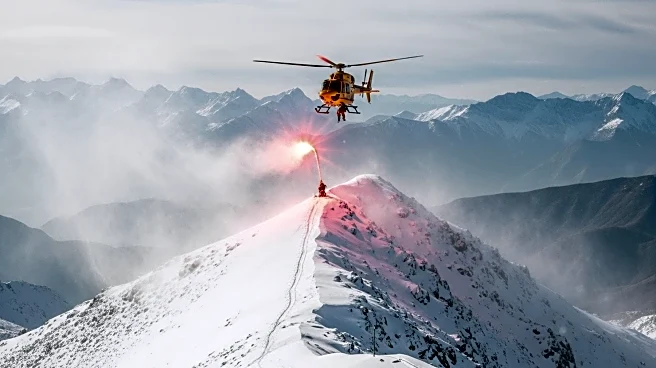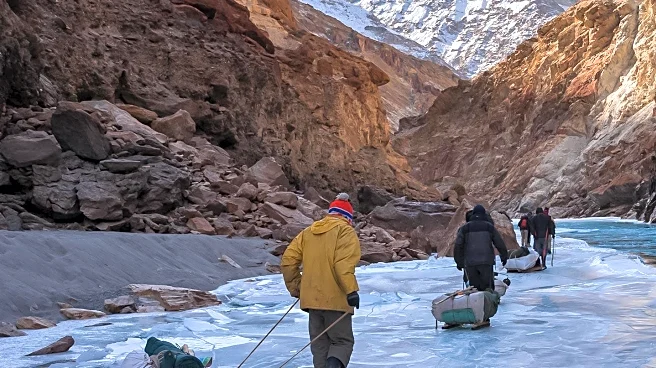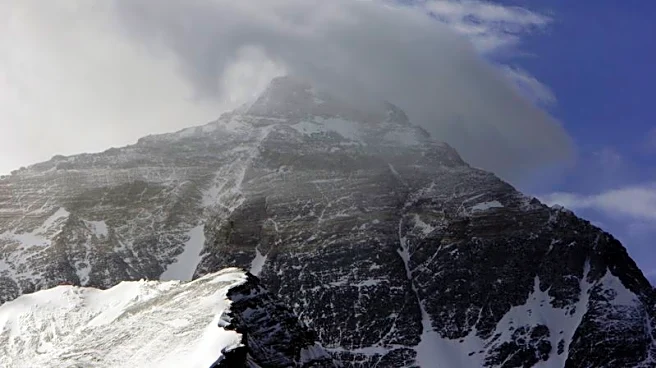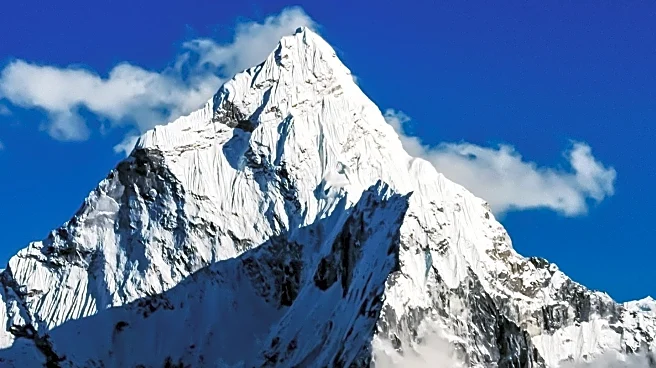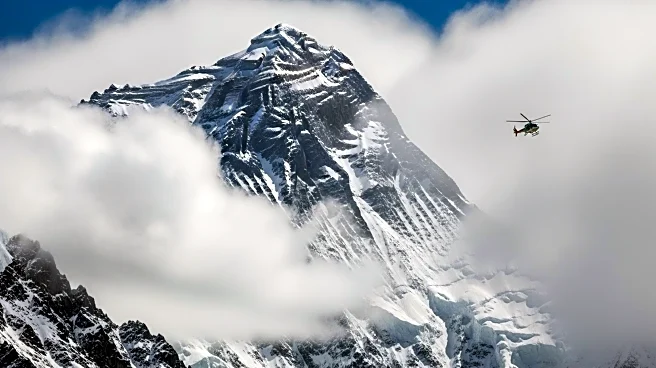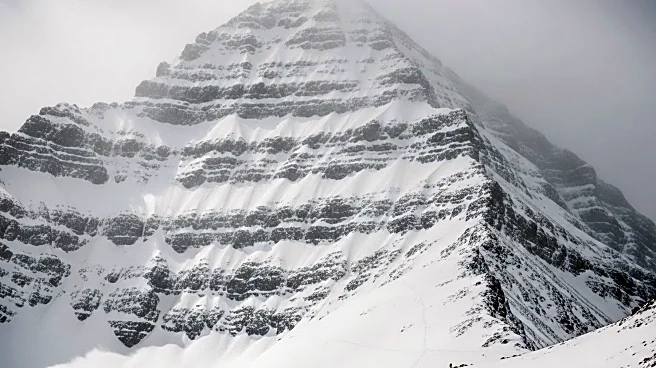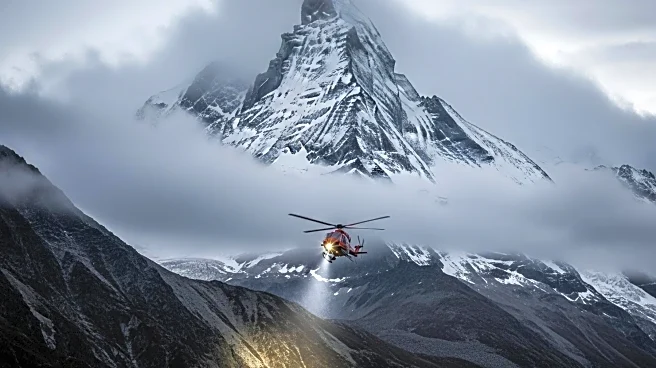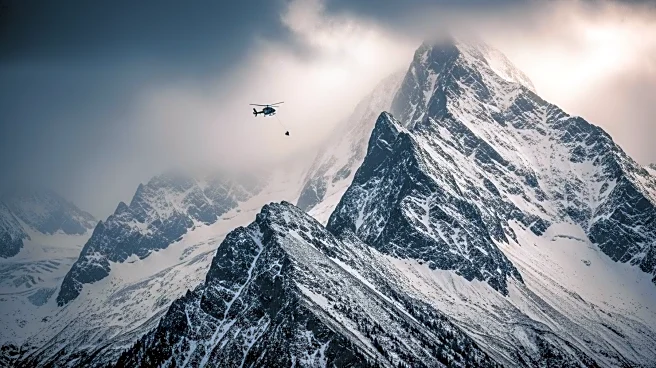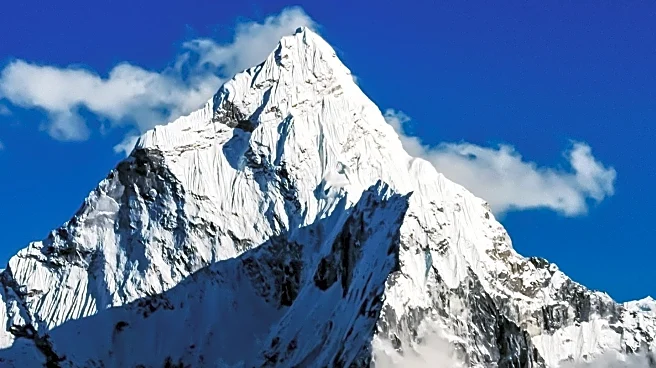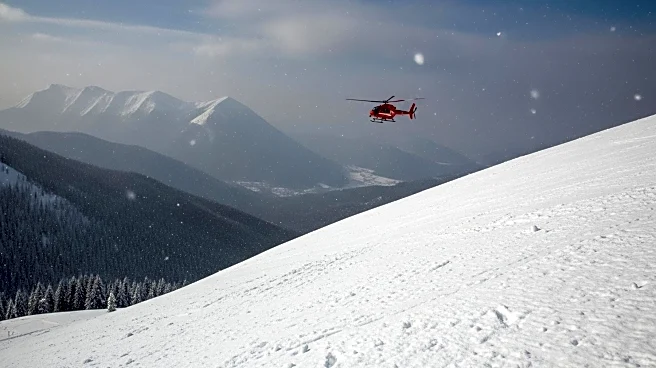What's Happening?
A severe snowstorm has trapped hundreds of hikers on Mount Everest in Tibet during China's national holiday. According to Chinese state media, approximately 350 hikers have reached a meeting point in Tingri County, while rescuers are in contact with another 200 individuals. The hikers were caught at an elevation of over 4,900 meters, with reports indicating that the snow reached depths of one meter, crushing tents and blocking paths. Rescuers have been dispatched to clear the way for those trapped, with a video showing a long line of people and animals moving through the snow. The incident occurred during a weeklong holiday when many Chinese citizens travel domestically and internationally.
Why It's Important?
The snowstorm on Mount Everest highlights the risks associated with high-altitude tourism, especially during peak travel periods. The incident underscores the challenges faced by rescue operations in remote and harsh environments, where weather conditions can rapidly deteriorate. The situation also draws attention to the safety measures and preparedness required for such expeditions. The economic impact on the local tourism industry could be significant, as safety concerns may deter future visitors. Additionally, the event may prompt a review of emergency response protocols and infrastructure in high-altitude tourist destinations.
What's Next?
Rescue operations are ongoing, with efforts focused on clearing paths and ensuring the safe descent of the trapped hikers. Authorities may conduct a thorough investigation into the incident to assess the adequacy of current safety measures and emergency preparedness. The outcome could lead to stricter regulations and improved infrastructure to prevent similar occurrences in the future. Stakeholders, including local governments and tourism operators, will likely collaborate to enhance safety standards and restore confidence in the region's tourism sector.
Beyond the Headlines
The incident on Mount Everest also brings attention to the broader geopolitical and cultural context of the region. Tibet, where the Chinese side of Everest is located, has been a focal point of political tension and cultural preservation efforts. The Chinese government's investment in infrastructure and tourism in Tibet is part of a broader strategy to integrate the region economically and politically. This development raises questions about the balance between economic growth and cultural preservation, as well as the ethical considerations of promoting tourism in politically sensitive areas.

